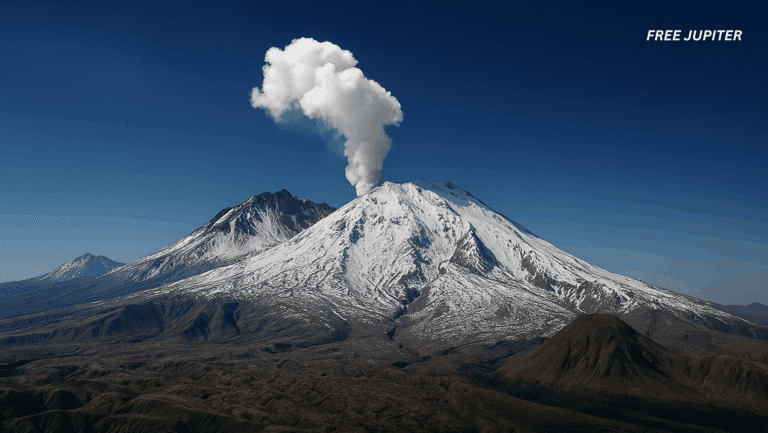It’s not every day that a study comes along and suggests something as bold as “Hey, there might be way more people on this planet than we thought.” Yet that’s exactly what a new piece of research is hinting at — and it has raised eyebrows across the scientific community.
Most of us grew up hearing regular updates about the global population climbing from 7 to 8 billion. These numbers usually feel solid, almost like they’re carved into stone. But a new analysis from researchers at Aalto University in Finland suggests the real headcount may be far murkier, especially in rural areas that don’t always end up on official spreadsheets. And according to their findings, that undercount could be far bigger than anyone expected.
A Study That Drops a Big Question: Are Billions Missing From the Count?
The world’s population is currently estimated at around 8.2 billion people. That number gets repeated everywhere — news reports, textbooks, government forecasts. But the researchers behind this new study say rural population numbers may have been undercounted for decades, potentially by a huge margin.
The team, led by researcher Josias Láng-Ritter, took an unusual approach. Instead of relying on large-scale surveys or satellite images, they examined data from 300 rural dam projects spread across 35 countries, covering the time period from 1975 to 2010.
Read more: “We Found Enough Hydrogen to Power Earth for 170,000 Years,” Scientists Say
These dam projects had one thing going for them: precision. Since building a dam often requires relocating people, governments must record exactly who lives in the affected area to determine compensation. That means detailed ground-level tracking — the kind of information that rarely exists for the world’s remote regions.
And according to the study, those highly accurate local records revealed something surprising: the official population data for these regions was often way lower than the real number of residents.
In fact, the researchers estimate that rural populations in some places could be undercounted by as much as 84%. If that pattern holds globally, the true number of humans on Earth could be much higher than current estimates suggest.
How Could We Miss That Many People?
At first glance, the idea of miscounting millions — or even billions — of people sounds absurd. But when you look closer at how population numbers are collected, the cracks start to show.
Here are some of the biggest reasons rural populations may slip through the statistical net:
1. Remote Geography
People living far from cities often reside in areas that are difficult to reach. Think mountain villages, island communities, desert settlements, or forest regions where roads are rare and data collectors visit even less.
2. Tight Budgets and Limited Infrastructure
Census operations are expensive, and many countries simply don’t have the resources to make frequent, detailed counts of every rural household.
3. Heavy Reliance on Models
In many areas, instead of counting people directly, organizations rely on population models — essentially, educated guesses based on older surveys, growth rates, and satellite imagery.
But satellite images can’t easily distinguish between:
- empty houses and full homes
- temporary structures and permanent ones
- seasonal migration and long-term settlement
4. Datasets Not Built for Accuracy
Some global population databases are designed for broad estimates, not pinpoint precision. When researchers use these models to fill gaps, errors compound over time.
Together, these issues create what the study calls a “blind spot” in our demographic tracking — a blind spot so large that it could hide entire populations.
Read more: Scientists Confirm Earth’s Hidden “Second Moon” After 60 Years Of Hiding
Not Everyone Agrees — And the Pushback Is Strong
As expected, the study’s claims didn’t sail through unchallenged.
Many demographers and population experts argue that a multi-billion-person discrepancy would be nearly impossible to miss. They point out that global systems track everything from food supply to school enrollment to vaccination rates. If billions of extra people were out there, they argue, those systems would likely show signs of strain.
Others caution against generalizing from dam project data. Areas selected for dams often have large, concentrated populations — that may not reflect typical rural regions around the world.
In short, the critics say: interesting idea, but extraordinary claims need extraordinary evidence.
Why This Debate Matters More Than It Seems
Even if the true number isn’t off by billions — even if it’s “only” millions — the accuracy of population data affects nearly everything:
Healthcare and Medicine
Vaccination goals, disease tracking, and care distribution rely heavily on knowing how many people live where.
Food and Water Planning
Governments plan their agricultural systems and water use based on population forecasts.
Climate and Environmental Impact
Population size affects carbon emissions, land use, and environmental pressure. A higher population may shift climate projections.
Economics and Aid Distribution
Development programs in poorer regions depend on having the right data. An undercount means communities receive less support than they need.
Urban Planning
Roads, schools, hospitals, and utilities all hinge on accurate headcounts.
Suddenly, this isn’t just an academic debate — it’s a practical one.
This Isn’t the First Time Population Data Raised Questions
While the Aalto University research is bold, it isn’t entirely alone. Other studies have noted mismatches in global population estimates:
• Satellite-Based Studies
Some satellite-driven analyses have found areas with more dwellings than census numbers would suggest. Homes without registrations, informal settlements, and new rural expansions often fly under the radar.
• Migration Research
Studies tracking seasonal and cross-border migration show large fluctuations that traditional censuses struggle to capture.
• Urban vs. Rural Shifts
Some research suggests urban populations are overestimated because rural residents are often misclassified after moving temporarily for work.
Together, these findings hint that our understanding of global population dynamics is more complicated — and less precise — than we like to think.
Read more: Scientists Spot Giant World Orbiting a Star 124 Light Years From Earth
So… Is the World More Crowded Than We Realize?
Right now, the answer is: maybe.
The Aalto study raises an intriguing possibility but doesn’t offer a definitive global recalculation. Instead, it highlights a problem we often overlook — remote communities may be living, working, and raising families beyond the edges of our data systems.
Whether the real population is 8 billion, 9 billion, or something in between, the study serves as a reminder that counting humans is not as simple as it sounds.
And if there’s one quirky takeaway here, it’s this:
Even in the age of satellites, smartphones, and supercomputers, it’s incredibly easy for entire communities to remain invisible on paper.
Featured image: Freepik.
Friendly Note: FreeJupiter.com shares general information for curious minds. Please fact-check all claims and double-check health info with a qualified professional. 🌱










